Leptoypha Stål, 1873
Type species: Tingis mutica Say
Body narrow and elongate, head short, clypeus not surpassing apical half of first antennal segment; antennae shorter than pronotumpronotum:
dorsal sclerite of the first thoracic segment
; cephalic spinescephalic spines:
a spine on the head
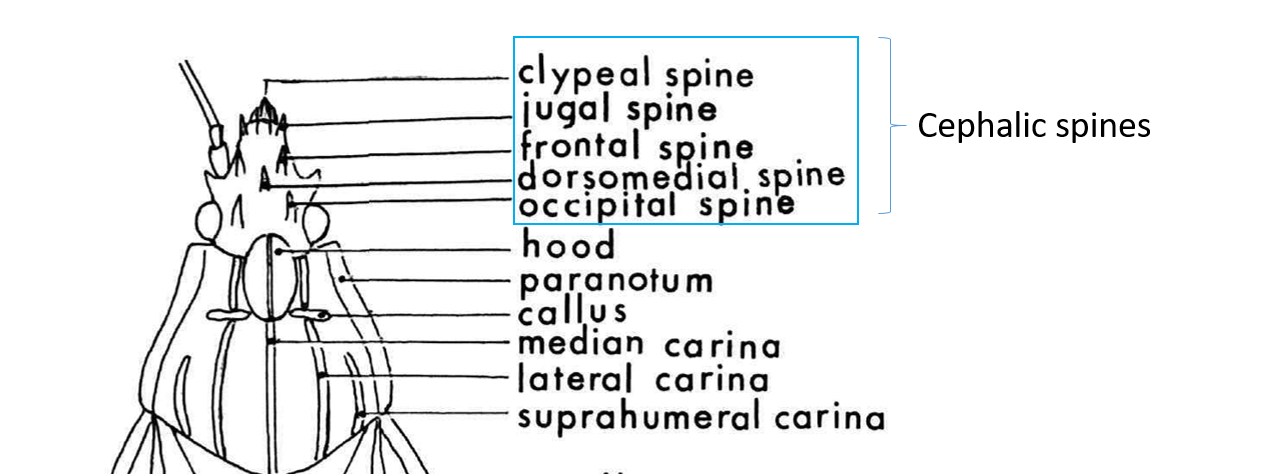 present; bucculaebucculae:
present; bucculaebucculae:
an elevated ridge on either side of the first labial segment
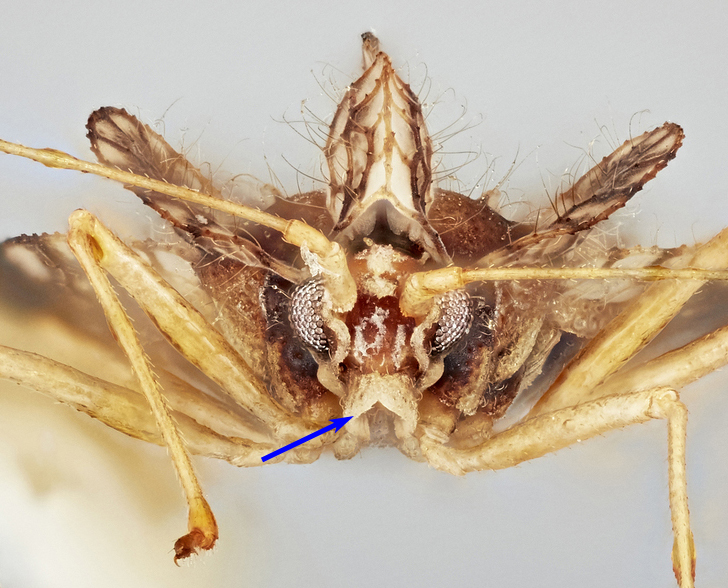 closed anteriorly; rostral sulcusrostral sulcus:
closed anteriorly; rostral sulcusrostral sulcus:
shallow furrow on either side of rostrum (labium)
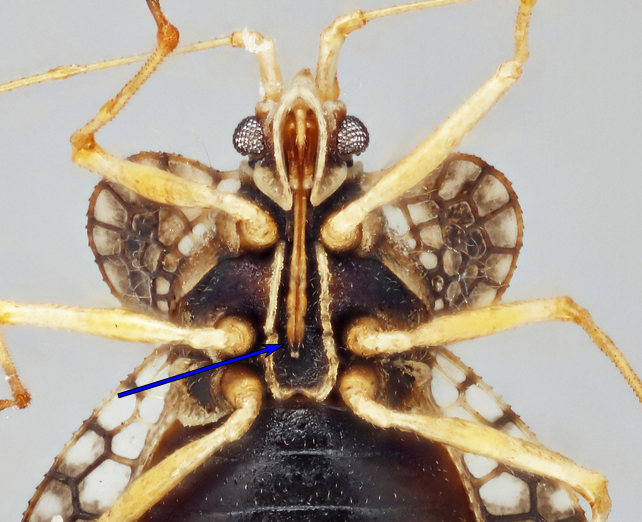 interrupted by a transverse carinacarina:
interrupted by a transverse carinacarina:
elevated ridge or keel
; pronotumpronotum:
dorsal sclerite of the first thoracic segment
usually unicarinateunicarinate:
bearing only a median carina on pronotum; occurs when lateral carinae are absent
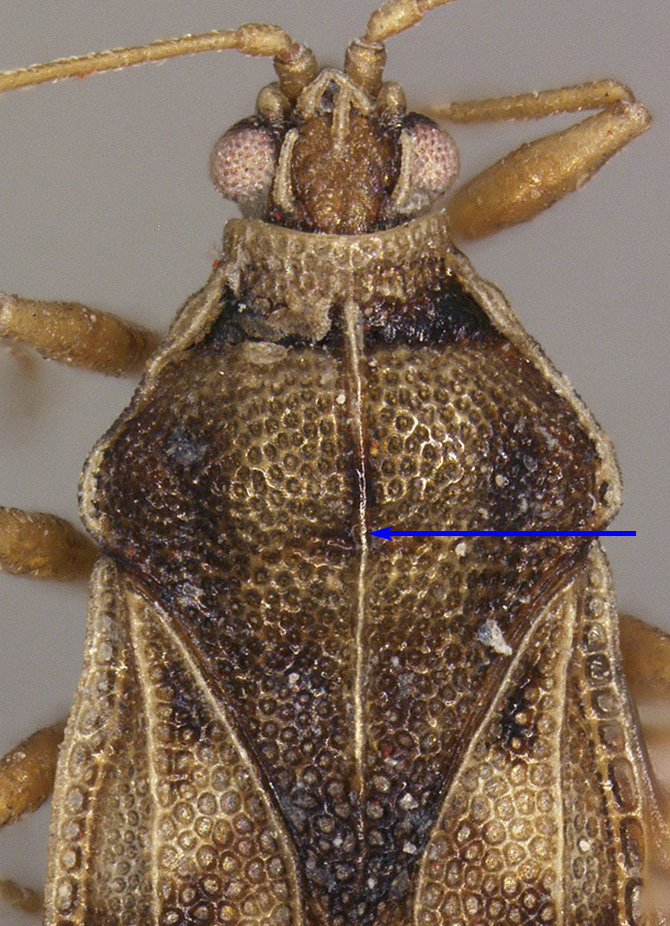 , in some species tricarinatetricarinate:
, in some species tricarinatetricarinate:
bearing both median carina and lateral carinae on pronotum
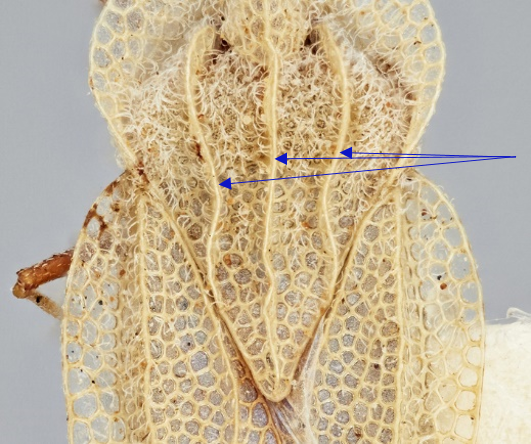 , with lateral carinaecarinae:
, with lateral carinaecarinae:
elevated ridge or keel
confined to the triangular posterior projection of pronotumpronotum:
dorsal sclerite of the first thoracic segment
and height of median carinacarina:
elevated ridge or keel
equal to that of lateral carinae; pronotal hoodhood:
term used to describe the modified anterior area of the pronotum, which is sometimes tectiform and sometimes bulbous, with numerous intermediate conditions.
 absent; paranotumparanotum:
absent; paranotumparanotum:
lateral extension of pronotum; may be carinate, explanate, or reflexed
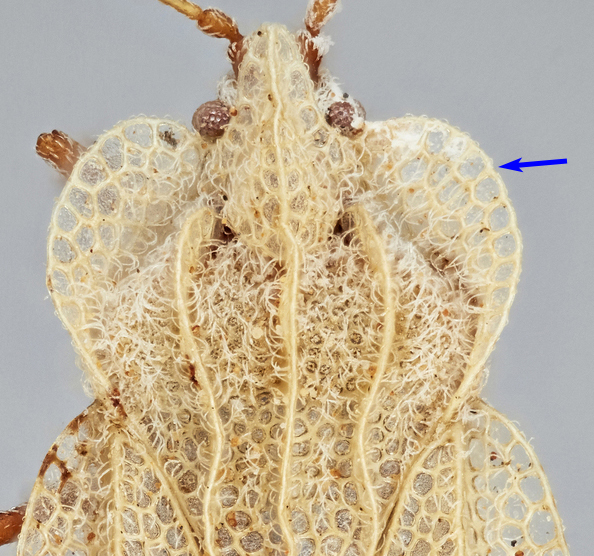 narrow, uniseriateuniseriate:
narrow, uniseriateuniseriate:
arranged in a single row, as in uniseriate areolae
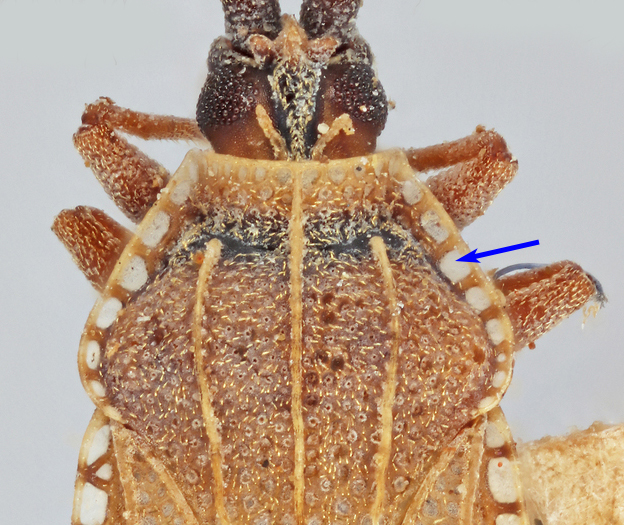 , reflexedreflexed:
, reflexedreflexed:
bent or curved backwards, as in a reflexed paranotum
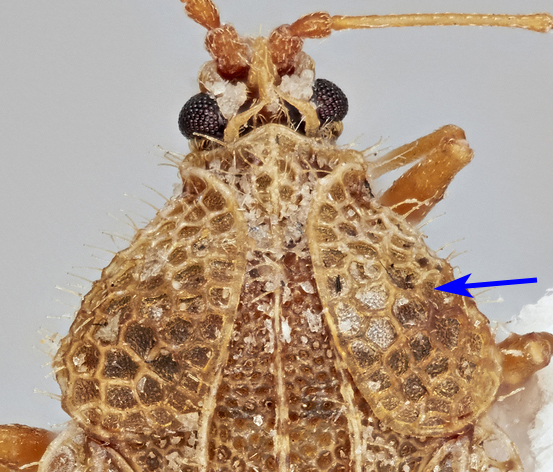 and appressed to the pronotal disc, spines absent along paranotal margin, anterior margin not projecting anterad; hemelytrahemelytra:
and appressed to the pronotal disc, spines absent along paranotal margin, anterior margin not projecting anterad; hemelytrahemelytra:
one of the basally thickened forewings of Hemiptera
with claval areaclaval area:
parallel-sided and sharply pointed anal area of hemelytron
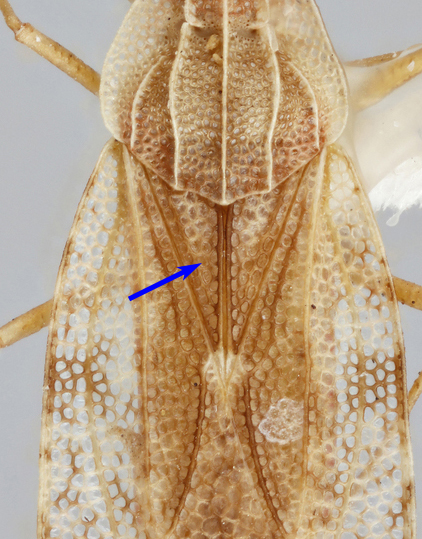 weakly developed, almost entirely covered by posterior margin of pronotumpronotum:
weakly developed, almost entirely covered by posterior margin of pronotumpronotum:
dorsal sclerite of the first thoracic segment
; costal areacostal area:
area of the costa delineated by the first longitudinal vein of the wing, usually running along the anterior margin
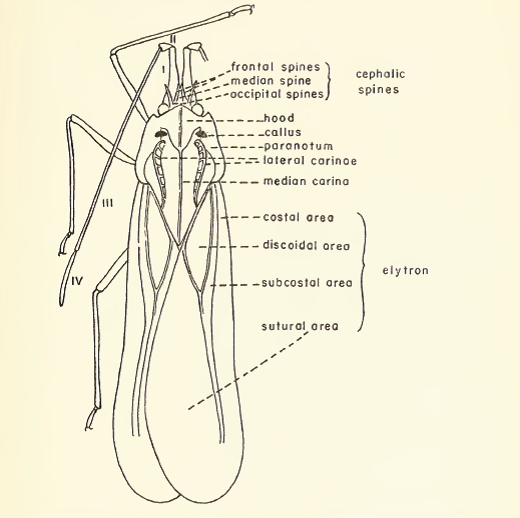 narrow or obsolete, in some species reflexedreflexed:
narrow or obsolete, in some species reflexedreflexed:
bent or curved backwards, as in a reflexed paranotum
 ; discoidal areadiscoidal area:
; discoidal areadiscoidal area:
area of the forewing posterior to the subcostal area
 level, discoidal cell extending slightly beyond the middle of hemelytrahemelytra:
level, discoidal cell extending slightly beyond the middle of hemelytrahemelytra:
one of the basally thickened forewings of Hemiptera
(Hurd 1946Hurd 1946:
Hurd, M. E. P. 1946. Generic classification of North American Tingoidea (Hemiptera-Heteroptera). The Iowa State College Journal of Science 20: 429-493., Knudson 2018Knudson 2018:
Knudson, A. H. 2018. The Tingidae (Hemiptera: Heteroptera) of southern Central America (with an emphasis on Costa Rica). Master#39;s thesis. North Dakota University. https://library.ndsu.edu/ir/handle/10365/28773).
Australasian, Nearctic, Neotropical, Oriental, Palearctic (Drake and Ruhoff 1960Drake and Ruhoff 1960:
Drake, C. J., and F. Ruhoff, A. 1960. Lace-bug genera of the world (Hemiptera: Tingidae). Proceedings of the United States National Museum 112., Drake and Ruhoff 1965Drake and Ruhoff 1965:
Drake, C. J., and F. A. Ruhoff. 1965. Lacebugs of the World: A Catalog (Hemiptera: Tingidae) Bulletin of the United States National Museum: 1ndash;634., Knudson 2018Knudson 2018:
Knudson, A. H. 2018. The Tingidae (Hemiptera: Heteroptera) of southern Central America (with an emphasis on Costa Rica). Master#39;s thesis. North Dakota University. https://library.ndsu.edu/ir/handle/10365/28773, Guilbert 2019Guilbert 2019:
Guilbert, E. 2019. Lace bugs database - http://www.hemiptera-databases.com/tingidae)
| Intercepted species | Shipment origin(s) | Inspected host(s) |
|---|---|---|
| Leptoypha sp. | Australia | Adenanthos sp., Chamelucium sp., Scholtzia sp. |
Drake and Ruhoff 1960Drake and Ruhoff 1960:
Drake, C. J., and F. Ruhoff, A. 1960. Lace-bug genera of the world (Hemiptera: Tingidae). Proceedings of the United States National Museum 112., Drake and Ruhoff 1965Drake and Ruhoff 1965:
Drake, C. J., and F. A. Ruhoff. 1965. Lacebugs of the World: A Catalog (Hemiptera: Tingidae) Bulletin of the United States National Museum: 1ndash;634., Knudson 2018Knudson 2018:
Knudson, A. H. 2018. The Tingidae (Hemiptera: Heteroptera) of southern Central America (with an emphasis on Costa Rica). Master#39;s thesis. North Dakota University. https://library.ndsu.edu/ir/handle/10365/28773, Guilbert 2019Guilbert 2019:
Guilbert, E. 2019. Lace bugs database - http://www.hemiptera-databases.com/tingidae